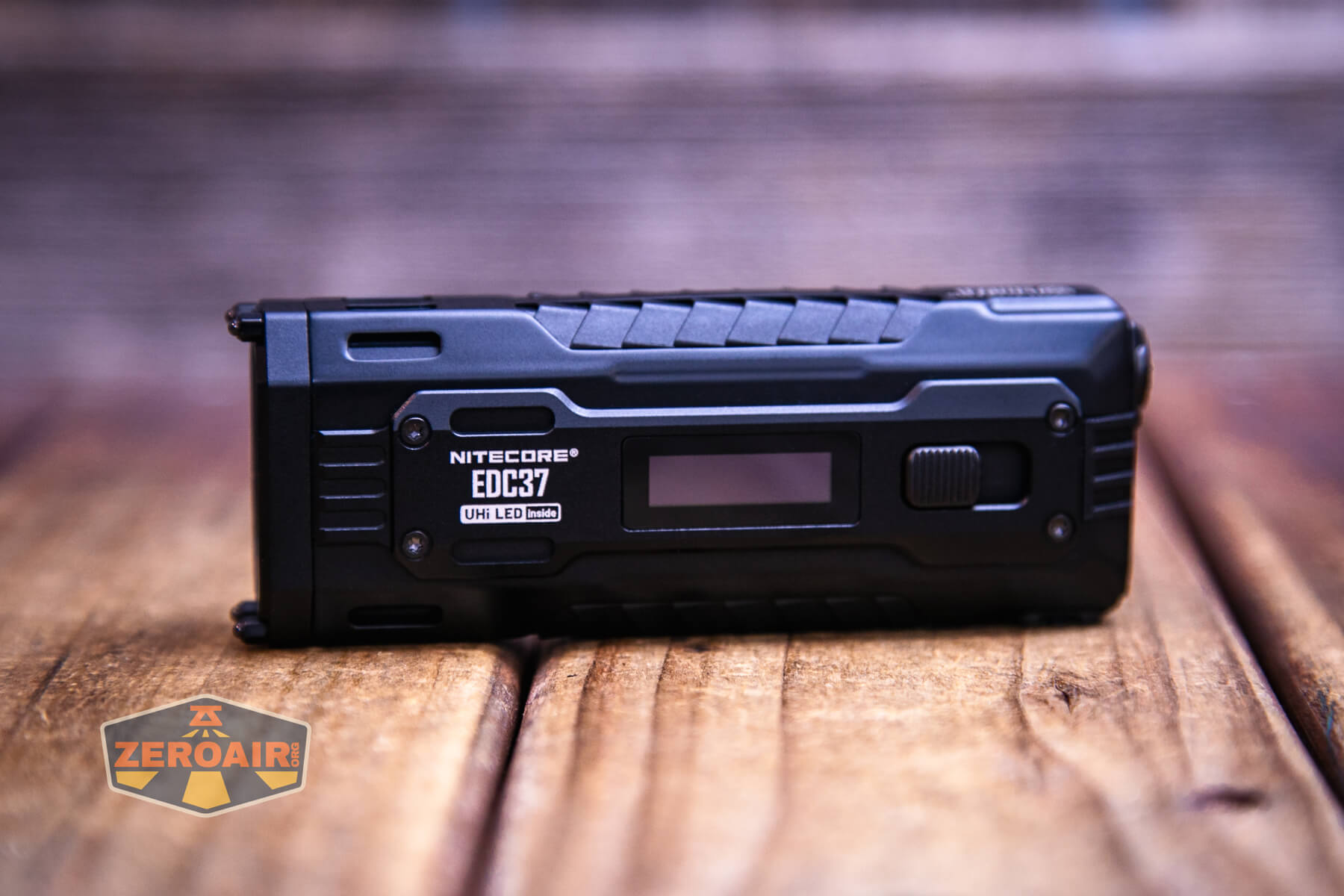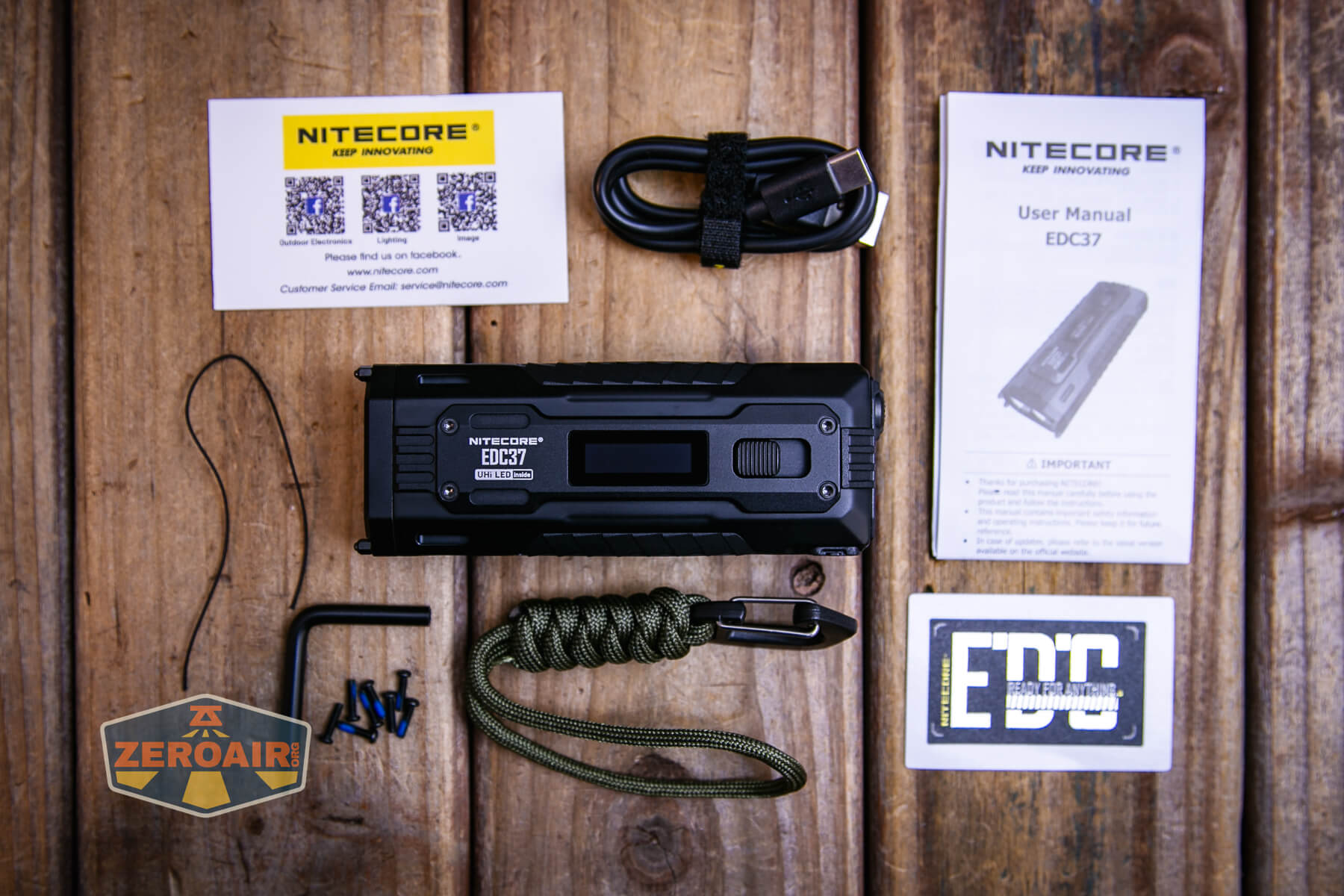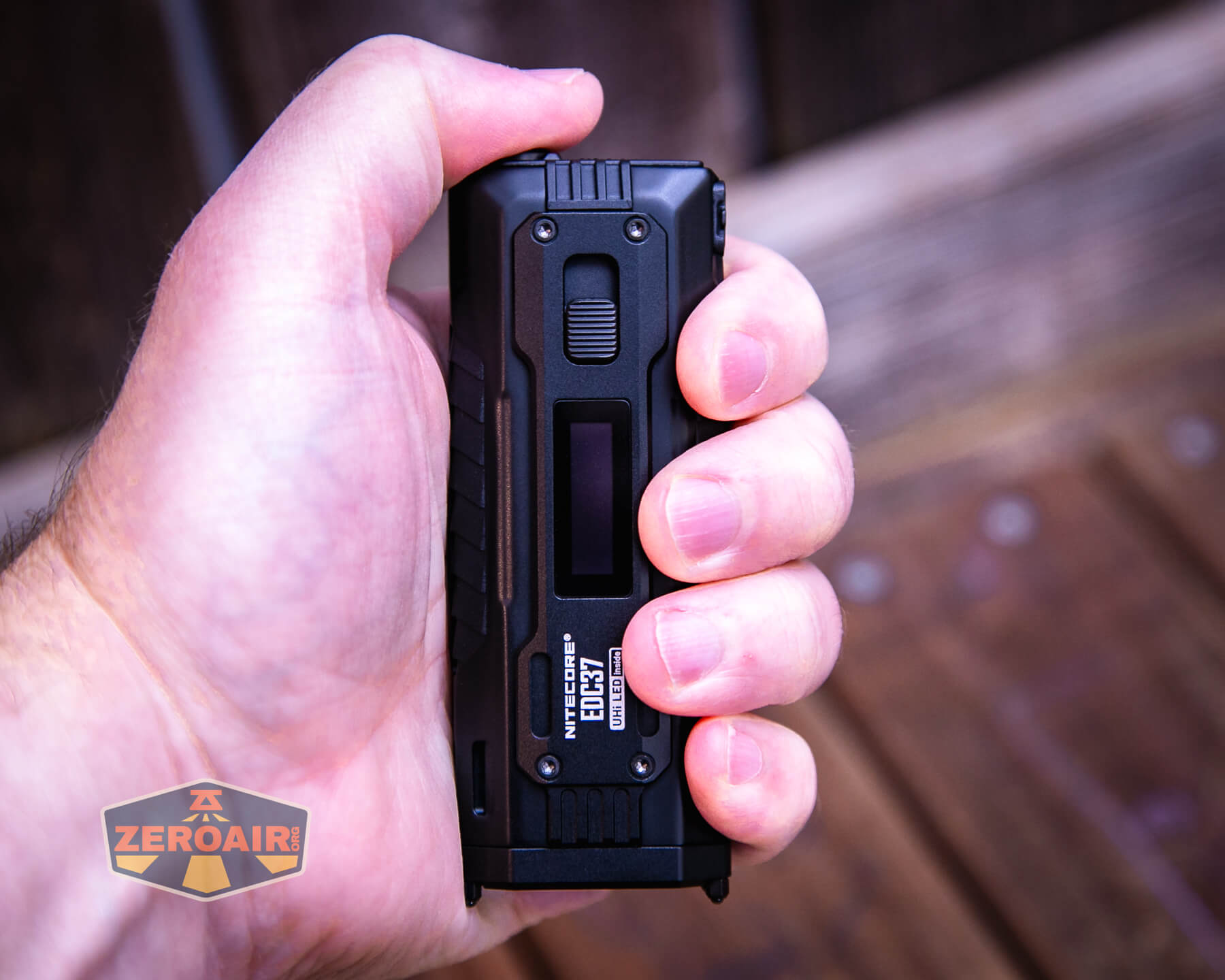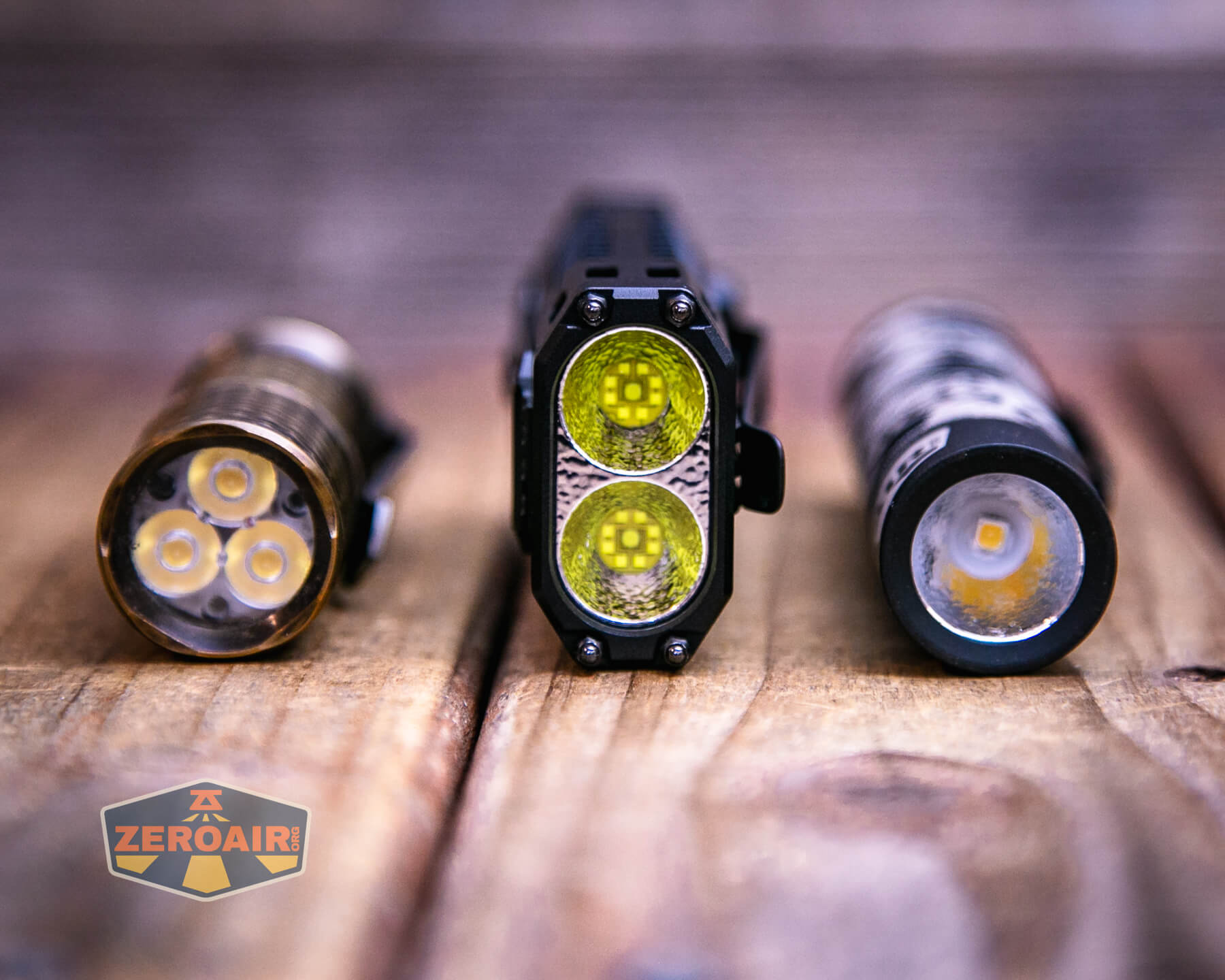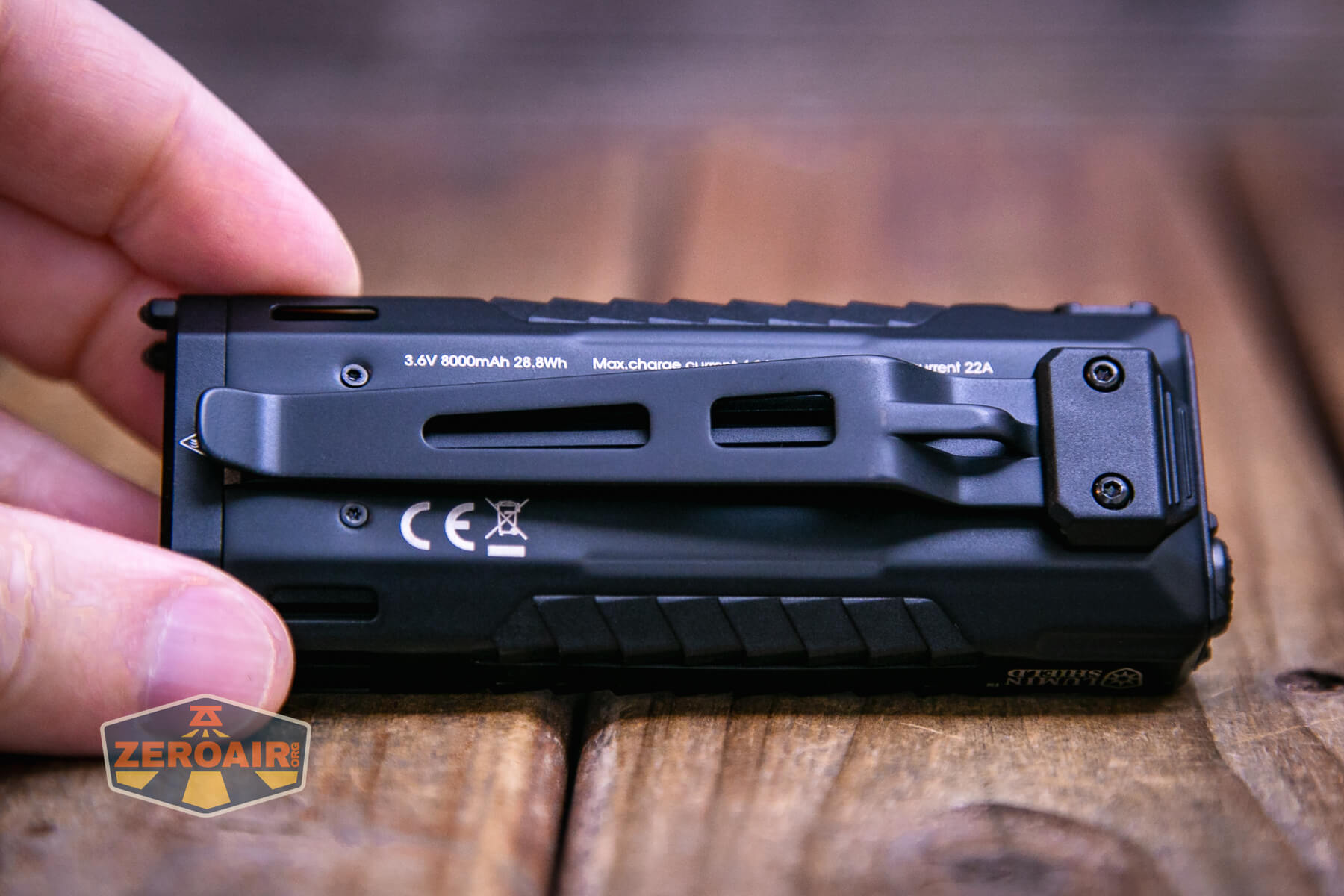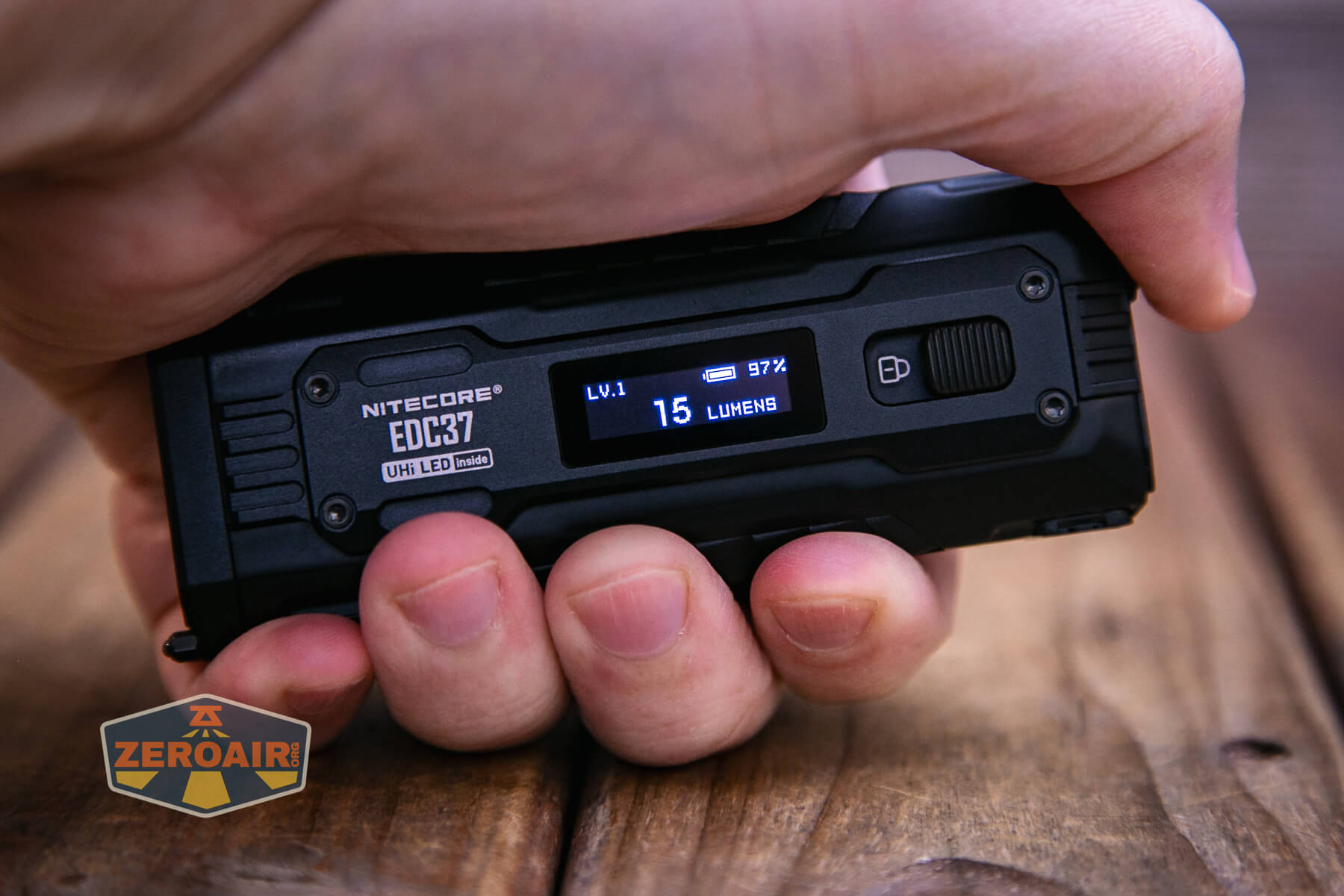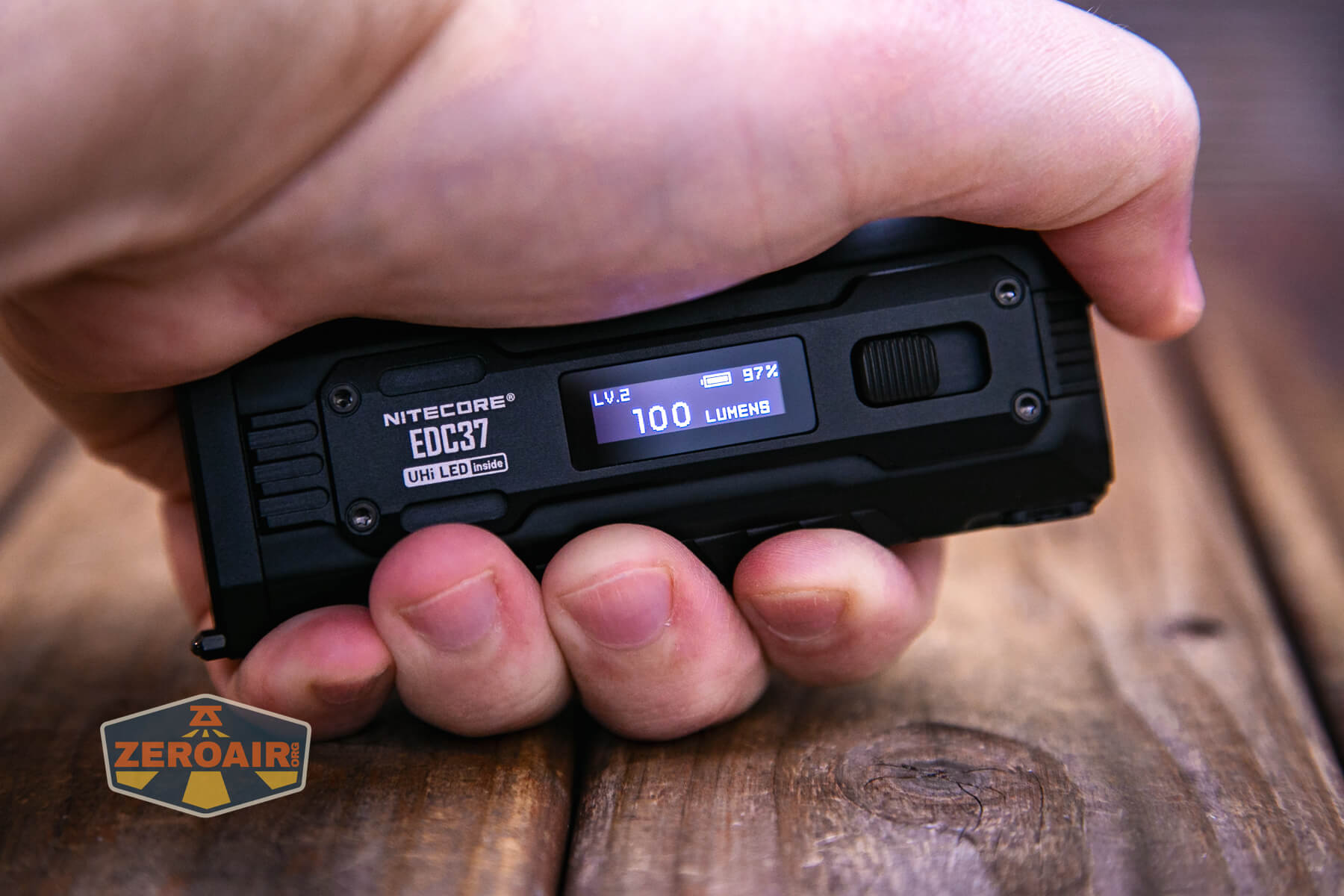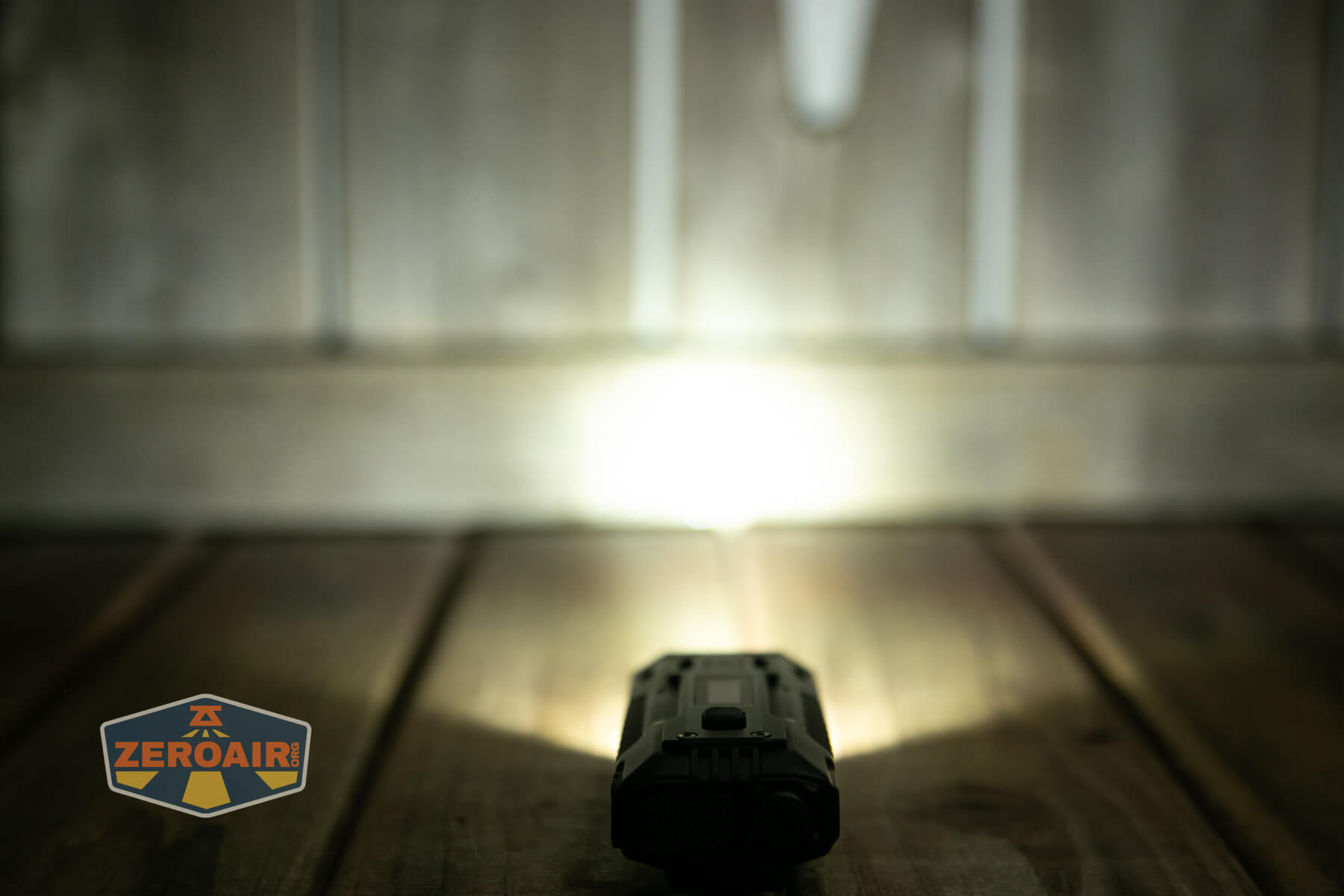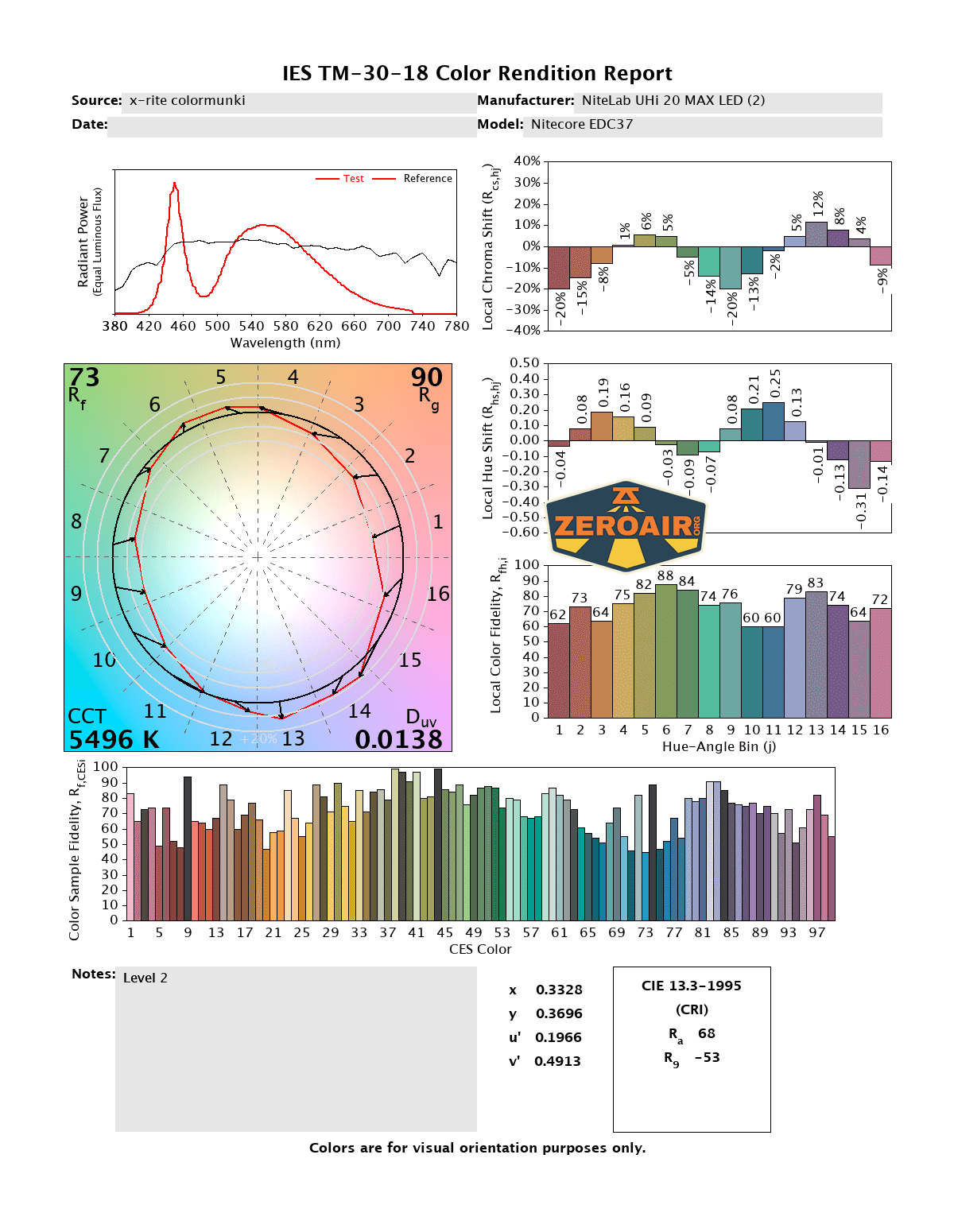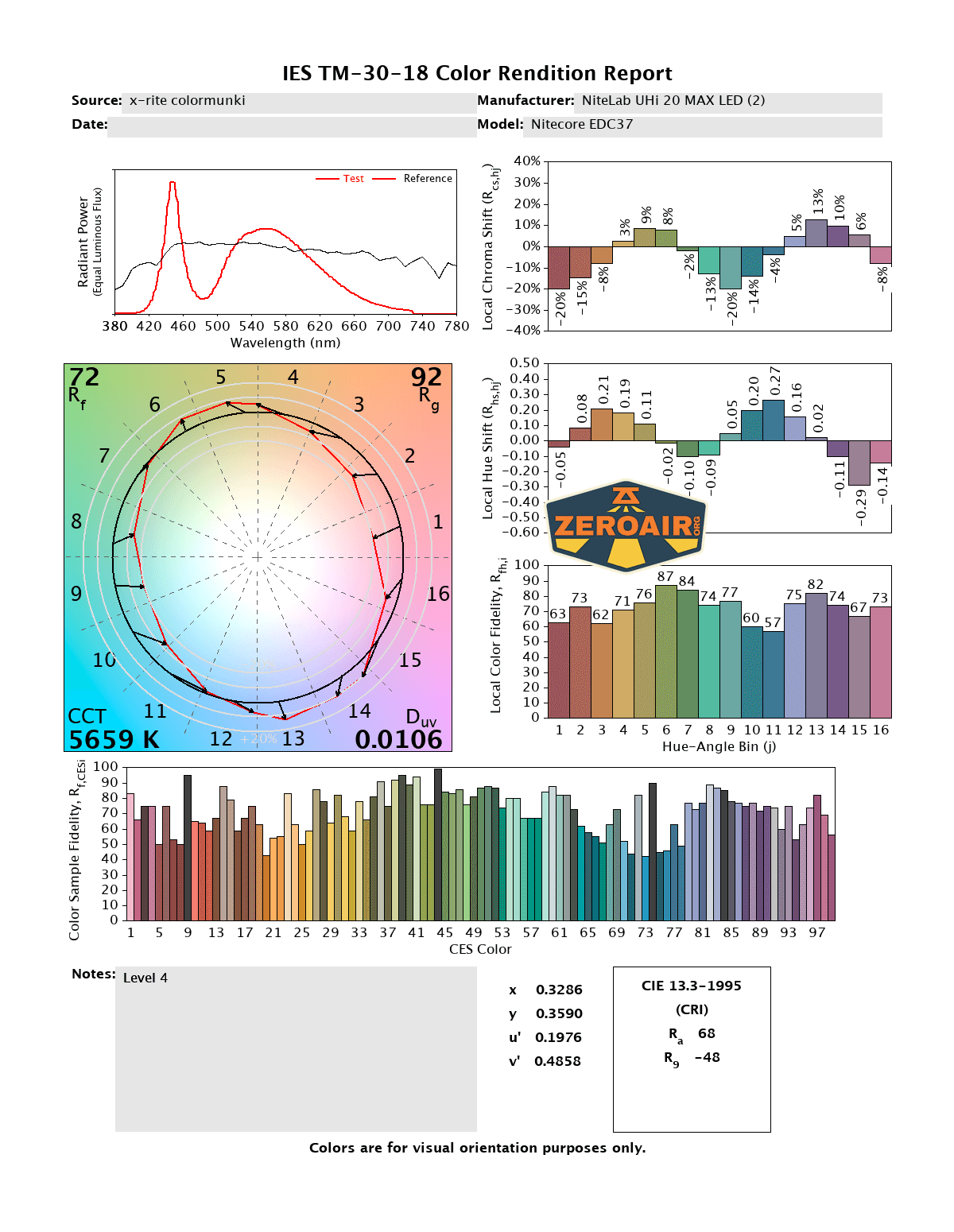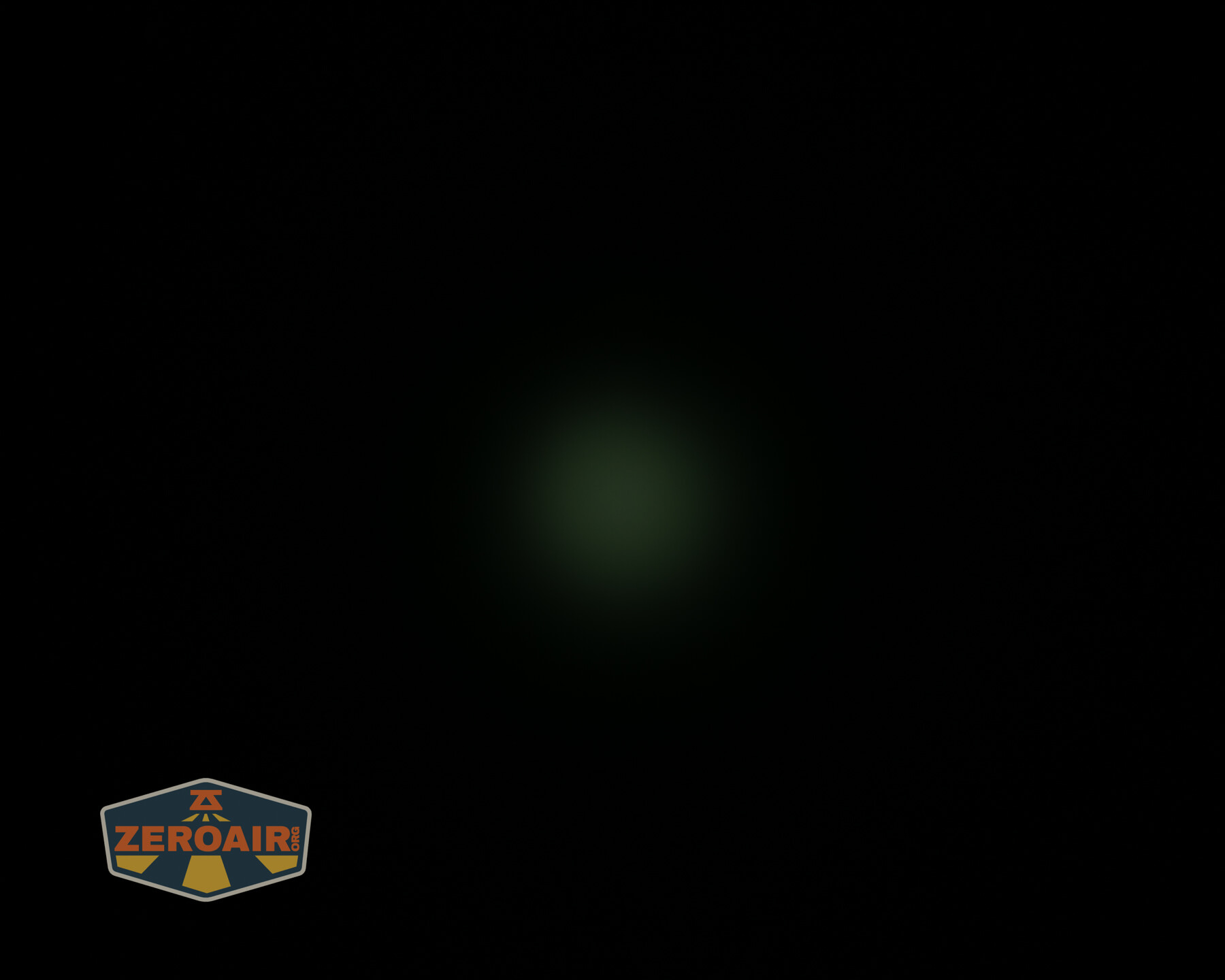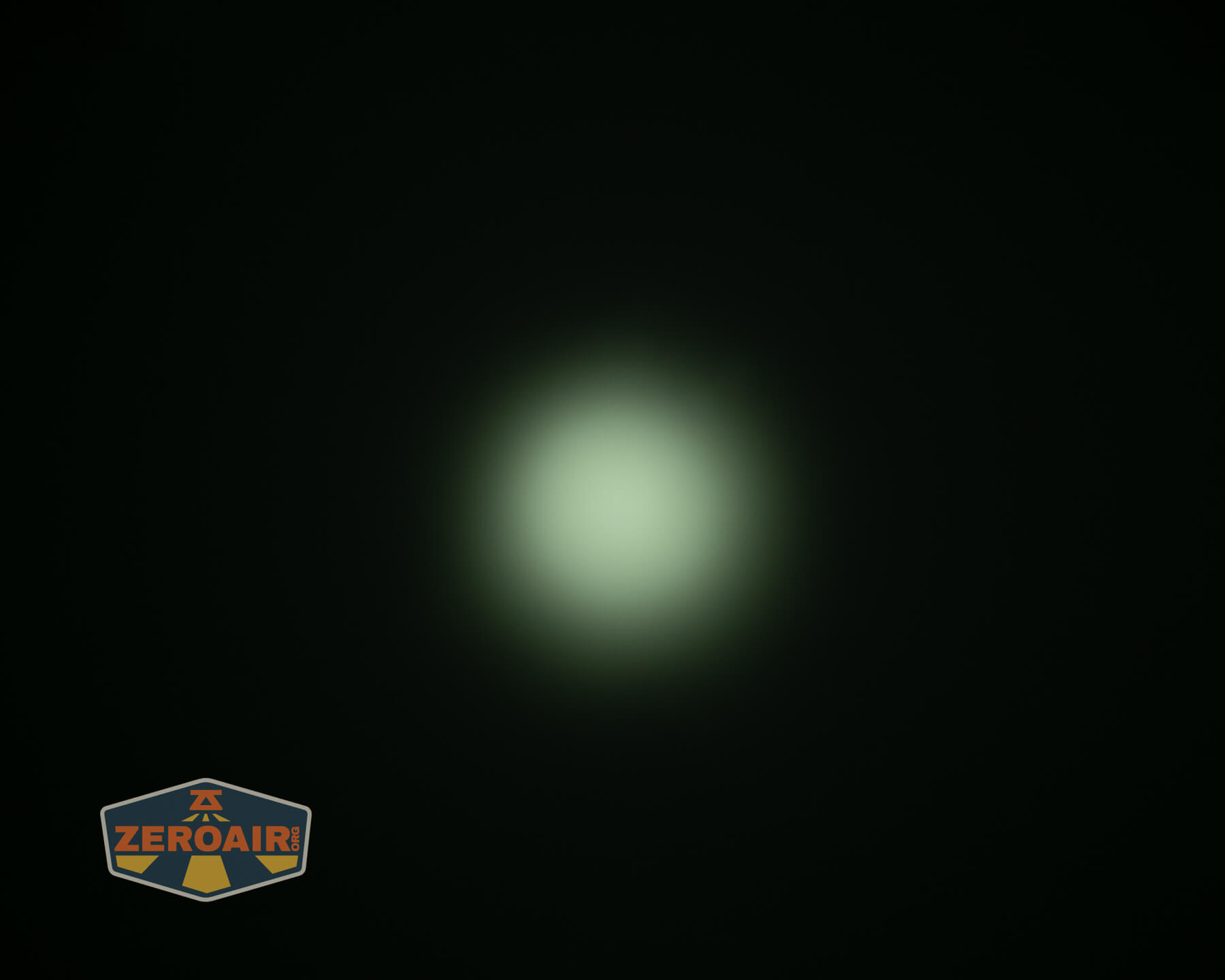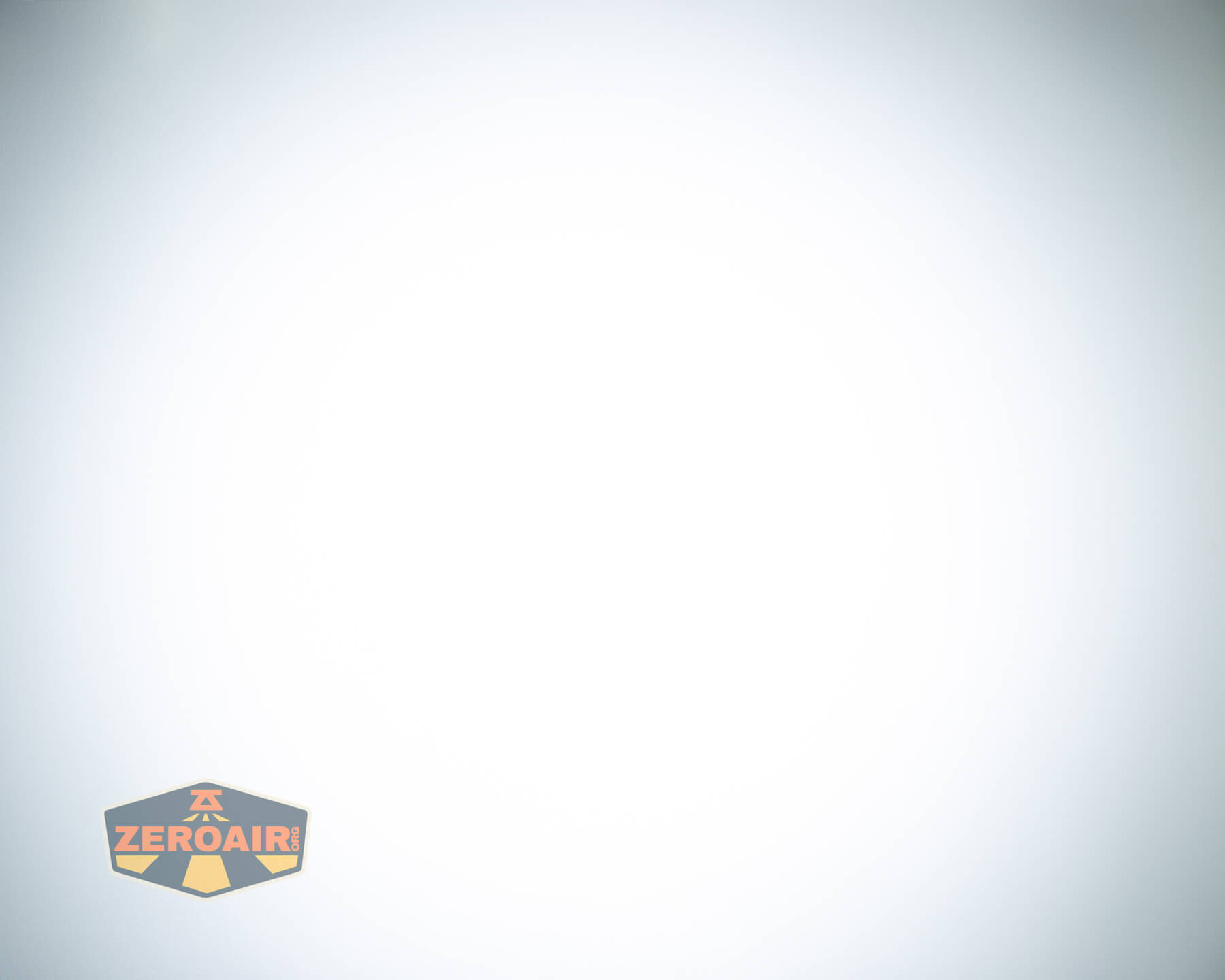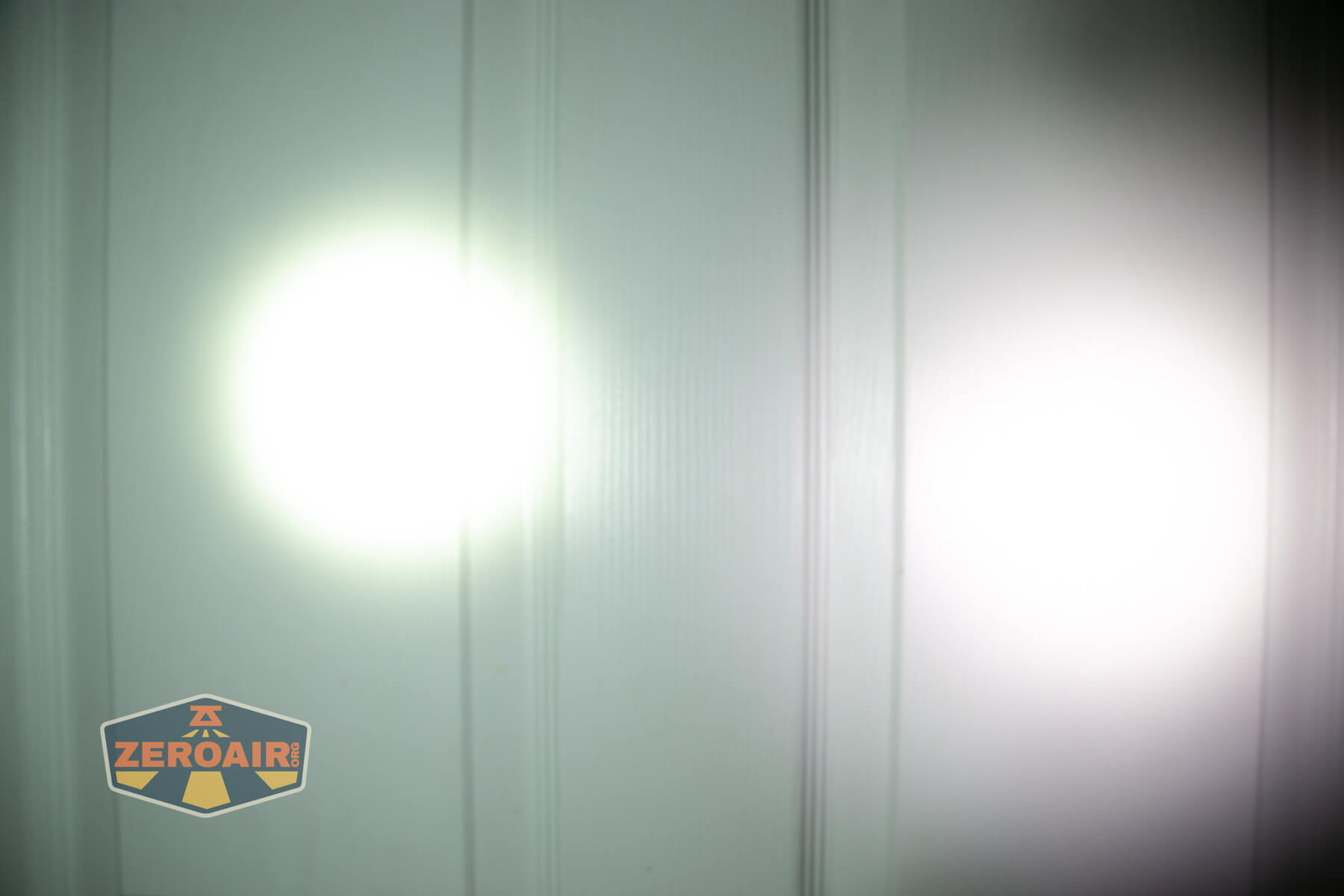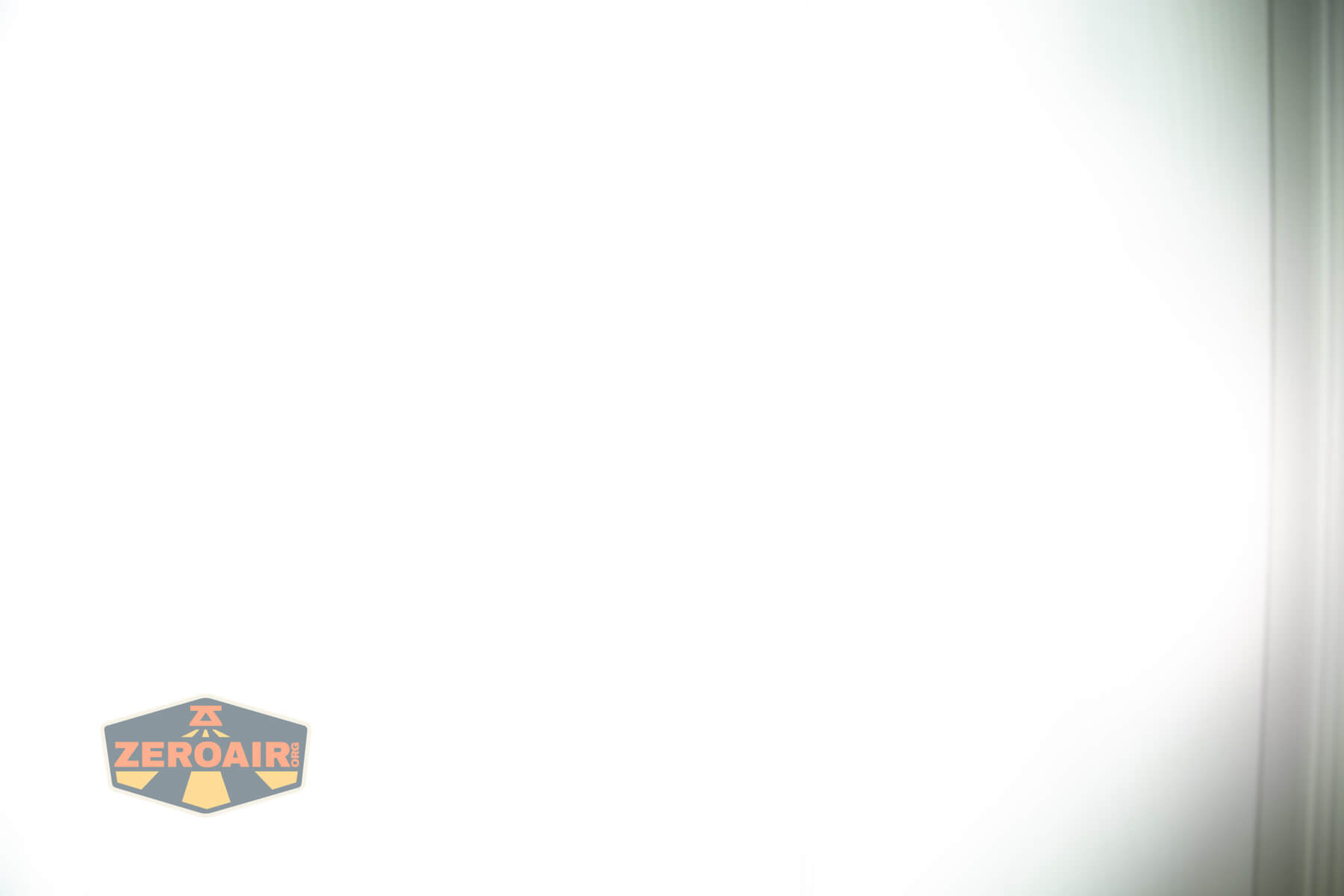Nitecore EDC37 Flat EDC Flashlight Review
The Nitecore EDC37 Flat EDC flashlight offers a physical lockout switch, dual e-switches, an 8000-lumen floodlight, and is remarkably neutral white! Read on!
Official Specs and Features
Here’s a referral link to the Nitecore EDC37 Flat EDC flashlight product page.
Versions
There’s just one version of the Nitecore EDC37 Flat EDC flashlight.
Price
The Nitecore EDC37 Flat EDC flashlight is listed for $139.95 and is available now! Here’s a Nitecore EDC37 Flat EDC flashlight referral link.
What’s Included
- Nitecore EDC37 Flat EDC flashlight
- Charging cable (USB to USB-C)
- Lanyard
- Alternative screws for front bezel
- Sticker
- Manual etc
Package and Manual
Here’s the included sticker. It’s heavily textured.
Build Quality and Disassembly
Just like other lights in this shape category by Nitecore, there’s a whole lot to like about the EDC37 Flat EDC flashlight. I’ve reviewed others, like the Nitecore EDC23 Saber. These are very solid lights! Just like the EDC27 UHi and EDC23, the Nitecore EDC37 Flat EDC flashlight has a metal body. In fact, it’s stainless steel, and the steel is coated with “titanium-colored PVD.” It’s a nice look. Also, it feels great to use!
I didn’t disassemble the Nitecore EDC37 Flat EDC flashlight at all. It does look to be held together with a number of TORX screws, though! This one has just 4 screws per side.
The EDC37 features these interesting screws on the front bezel. I suppose they’re tactical (ish) but also could be used to lessen burn potential when the light is on and headstanding. Fortunately, Nitecore includes some spare alternative screws that are flat
The photo below is intended to show that these cooling … holes in the head go all the way through part of the body. I suppose they provide better cooling, or potentially keep your soft parts away from the hottest parts of this light.
Here’s a bit of branding on the switch-end of the Nitecore EDC37 Flat EDC flashlight.
Size and Comps
Dimensions L-4.25″ x W-1.55″ x H-1.22″
Weight 7.02 oz
If the flashlight can headstand, I’ll show it here. If it can tailstand, I’ll also show that here!
Here’s the test light with the venerable Convoy S2+. The version below is a custom laser-engraved Convoy S2+ host by GadgetConnections.com. I did a full post on an engraved orange host right here! Or go straight to GadgetConnections.com to buy your Convoy S2+ now!
Also in the photo above, my Standard Reference Material (SRM) flashlight is the Hanko Machine Works Trident, an 18350 light. While I have not reviewed or tested the Gunner Grip version seen here, I have tested a Hanko Machine Works Trident Total Tesseract in brass. I love the Trident, and it’s a striking contrast to the inexpensive Convoy S2+, another great SRM.
Retention and Carry
This pocket clip that ships attached is extraordinarily beefy! It’s so peculiar, in fact, that I feel like it probably fits some role I just don’t even know about – like it’s utility-built and fits some specific [whatever] [wherever] (like MOLLE attachments do.)
The clip is held in place by two screws – two screws that also probably hold parts of the body together.
The included lanyard is paracord with a sort of D-clip which is plastic with a metal gate.
That’s it for included carry options.
Power and Runtime
Nitecore says the EDC37 Flat EDC flashlight runs an 8000mAh 28.8Wh battery, but doesn’t say much else. It is not intended for exchange by the user. It’s not field serviceable!
I tested the highest two modes the best way I could test them. They are very much “momentary” levels. Not just that, but as you use either of those, the power screen on the OLED shows the power level dropping. Once it’s expired, the light steps down and 1) cools off and 2) power “recovers.” So in both of these highest-mode tests, I waited until the power level had fully recovered, then held the switch until power (sufficient for high modes) was depleted. In neither case was the battery fully depleted, thoough – it read 98 and 94% in these modes. But you should be able to get the idea.
The temperature lines in these charts are included as general context, not precise measurements. The values represent the range (min to max) during testing, but should not be taken as exact readings. Temperature sensors are attached however feasible and not always on the bezel or hottest spot (assuming that can even be clearly defined). Even with ideal placement, too many variables affect temperature to definitively state a specific max value.
Charging
The Nitecore EDC37 Flat EDC flashlight has built-in charging by way of a USB-C charging port in the tail near the switches. A press-in cover protects this charging port.
An appropriate cable is included: USB to USB-C. While charging, the OLED displays battery voltage.
Charging is quick! The rate is nearly 2A and in total takes only around 2 hours. That’s great! 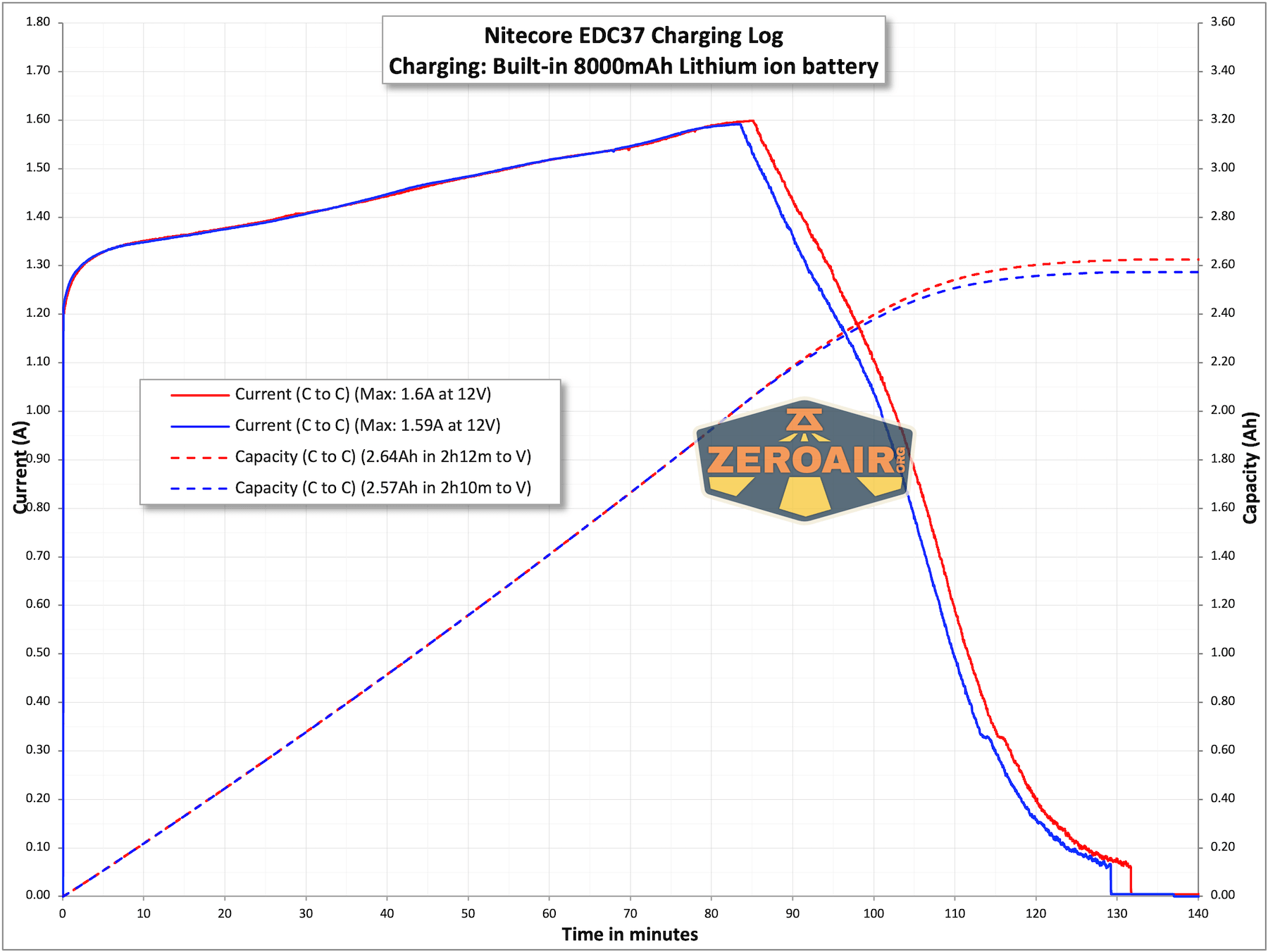
Modes
| Mode | Mode Claimed Output (lm) | Claimed Runtime | Measured Lumens |
|---|---|---|---|
| Lumin Shield (Floodlight) | 8000 | – | 8139 (0s) – (30s) |
| Search (Spotlight) | 3000 | – | 2882 (0s) – (30s) |
| High | 1500 | 7h30m | 1357 |
| Mid | 400 | 8h30m | 365 |
| Low | 100 | 30h | 88 |
| Ultralow | 15 | 190h | 10 |
Pulse Width Modulation
There is a bit of ripple on a couple of the lower modes, and the highest level seems to have what looks like PWM but could also just be bigger ripples.
Click here to see a “baseline” – a chart with almost no light hitting the sensor.
Then there’s the Ultrafire WF-602C flashlight, which has some of the worst PWM I’ve seen. It’s so bad that I used a post about it to explain PWM! Here are multiple timescales (10ms, 5ms, 2ms, 1ms, 0.5ms, 0.2ms) to make comparing this “worst” PWM light to the test light easier. That post also explains why I didn’t test the WF-602C at the usual 50us scale.
User Interface and Operation
First, there’s a physical lockout switch near the OLED.
With this switch in the locked position (as seen below), the OLED responds with “LOCKOUT” but the light will not output any light.
Once out of lockout, two switches control the Nitecore EDC37 Flat EDC flashlight. There’s a power switch – you can see it below on the left. The other, bigger, and flatter switch is a mode switch. Both are e-switches.
The OLED displays quite a bit of information. It’s a nice addition.
Here’s a user interface table!
| State | Action | Result |
|---|---|---|
| Off | Click Power Switch | On (Mode memory) |
| Off | Hold power switch (half press) | Momentary Ultralow |
| On | Click power switch | Off |
| On | Half press (and hold) power switch (if OLED is active) | Momentary Ultralow |
| Off | Half press power switch (if OLED is not active) | Activate OLED display – Continued half presses advance the modes without the light being on |
| Off | Full press power switch | On in mode memory or purposefully selected mode (see steps in previous row) |
| Unlocked or Lockout 1 | Half press mode switch | Momentary Search (Spotlight) |
| Unlocked or Lockout 1 | Full press mode switch | Momentary Lumin Shield (Floodlight) |
| On | Half press (click action) power switch | Mode advance (Lowest 4 modes) |
| Lockout 1 | Power button | No change in state. OLED will still display the memorized mode and battery information. |
LED and Beam
The Nitecore EDC37 Flat EDC flashlight uses two NiteLab UHi 20 MAX emitters. These emitters look so interesting!
Despite having two emitters (with big footprints), lightly orange peel and small reflectors, this light does have a surprisingly tight beam profile.
LED Color Report (CRI and CCT)
I don’t see anywhere that Nitecore makes this claim, but this isn’t a (properly) cool white flashlight. It’s neutral, with low CRI. The highest two modes step down too fast for me to read the CCT/CRI on those! It’s pretty consistent on these four tested modes, though, so you can probably make accurate inferences.
CCT (Correlated Color Temperature) refers to the measurement of the color appearance of light, expressed in Kelvins (K), which indicates whether the light is warm (yellowish) or cool (bluish). A lower CCT (below 3000K) is considered warm light, while a higher CCT (above 5000K) gives cooler, bluish light.
CRI (Color Rendering Index) is a measure of how accurately a light source renders colors in comparison to natural sunlight. Scored on a scale from 0 to 100, higher CRI values indicate that colors appear more true to life and vibrant, similar to how they would look under the sun.
Beamshots
These beamshots always have the following settings: f8, ISO100, 0.3s shutter, and manual 5000K exposure. These photos are taken at floor level, and the beam hits the ceiling around 9 feet away.
Tint vs BLF-348 (KillzoneFlashlights.com 219b version) (affiliate link)
I keep the test flashlight on the left and the BLF-348 reference flashlight on the right. These photos are taken around 18 inches from the door.
I compare everything to the KillzoneFlashlights.com 219b BLF-348 because it’s inexpensive and has the best tint!
Summary and Conclusion
These flat-style lights seem very popular lately, and the Nitecore EDC37 Flat EDC flashlight is a great example. The metal body is solid, the output is briefly incredible, and the lower modes provide a nice flat output. USB-C charging works very well, and the user interface is familiar and feature-rich. It’s a good version of a high-output flat light from Nitecore!
The Big Table
| Nitecore EDC37 Flat EDC flashlight | |
|---|---|
| Emitter: | NiteLab UHi 20 MAX LED (2) |
| Price in USD at publication time: | $139.95 |
| Cell: | x8000mAh internal battery |
| Runtime Graphs | |
| LVP? | Probably |
| Switch Type: | E-Switch (2) |
| On-Board Charging? | Yes |
| Charge Port Type: | USB-C |
| Charge Graph | |
| Power off Charge Port | |
| Claimed Lumens (lm) | 1500 |
| Measured Lumens (at 30s) | 1500 (100% of claim)^ |
| Candela per Lumen | 16.1 |
| Claimed Throw (m) | 230 |
| Candela (Calculated) in cd (at 30s) | 387lux @ 5.824m = 13127cd |
| Throw (Calculated) (m) | 229.1 (99.6% of claim)^ |
| Claimed CCT | – |
| Measured CCT Range (K) | 5500-5700 Kelvin |
| Item provided for review by: | Nitecore |
| All my Nitecore reviews! | |
^ Measurement disclaimer: Testing flashlights is my hobby. I use hobbyist-level equipment for testing, including some I made myself. Try not to get buried in the details of manufacturer specifications versus measurements recorded here; A certain amount of difference (say, 10 or 15%) is perfectly reasonable.
What I like
- Robust build – it’s stainless steel!
- Not just stainless but also coated which probably makes it more durable
- Dual switch interface is pretty good
- OLED display seems adequately taken advantage of
- USB-C Charging works great and is quick
- Output is truly remarkable if brief
- Does hit the output claims!
- No proximity sensor
What I don’t like
- Battery is not replaceable
- Positive Duv output (green)
- Low CRI
- “Turbo” modes step down soooo quickly.
Notes
- This content originally appeared at zeroair.org. Please visit there for the best experience!
- Please use my Amazon.com referral link to help support zeroair.org!
- Please support me on Patreon! I deeply appreciate your support!
